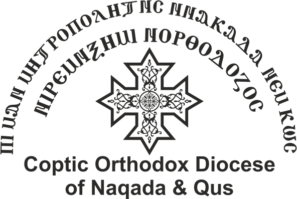Naqada City
What historians wrote about Naqada:
The name “Naqada” is driven from the word “Nakudi” which describes people standing fast in the faith. Naqada is ancient and has been known from the Predynastic Era until modern times and it belongs to Qena Governorate and is located about 30km southward of Qena city, 25 km northward of Luxor, and 640 km away from Cairo.
Naqada region is situated between the village of Deir al-Ballas (El Mahrousa) in the north and the village of Qamula in the south. This region is approximately 30 km long.
Naqada in the Predynastic Era:
Scholars designate the Predynastic Era as a time when the culture was beginning to resemble what would later become the Dynastic Era. The city of Naqada was known in the Predynastic Era as “Nubet”, which means golden or the city of gold. “Nubet” was the hub of one of the oldest cultures of the ancient Egyptian civilization. The people of Naqada excelled in artistic accomplishments such as pottery making and weaving. Scholars further divide this Predynastic Era into:
Naqada I (about 4000 – 3500 BC)
Naqada II (about 3500 – 3200 BC)
Naqada III or Dynasty 0 (about 3200 – 3000 BC), the Protodynastic Period was characterized by a marked difference between the culture of Upper and Lower Egypt.
Naqada in the Greek Era:
The Greeks called it “Embos” which means gold and the town of Toukh, which is affiliated with the city of Naqada is built on the ruins of “Embos”.
Naqada in the Roman Era:
It was known in the Roman Era as “Maximianopolis”, which means the city of King Maximian. Also, there are ruins of a Roman temple column that exist next to Anba Anthony Al-Badwani Catholic Church in Naqada. In addition, some ruins of a Roman bathroom were also found, and the place was called (Kom Al-Hammam).
Naqada in the Coptic Era:
In the Coptic Era, Naqada was called “Nakati” which means understanding or knowledge, because some of its people were known for this. The name was altered with the introduction of the Arabic language.
Not only did Naqada produce many Christian martyrs in the era of martyrdom, but also it was known for its saints. There are eight monasteries in the desert west of Naqada that had been vandalized over the years starting from the Persian invasion of Egypt in the 7th century.
These eight monasteries are:
Monastery of the Venerable Archangel Michael – Hager al-Mansheya (the most northern monastery).
Monastery of the Holy Cross and Anba Shenouda, Archimandrite – Hager Danfiq
Monastery of Anba Andras (Abu El-leif) – Hager Danfik
The Monastery of the Great Martyr St. George, known as “Al-Magmaa” – Hager Danfiq
The monastery of Anba Besentaous, the Spirit Bearer – Hager Danfik
The Monastery of the Great Martyr St. Mercurios Abu Sefein – Sous Village
Monastery of the Great Martyr St. Victor son of Romanos – Hager Sous
The famous monastery of Anba Samuel Al-Naqadi, “Al-Qazzaz” – Hager Danfiq – one of the extinct monasteries
